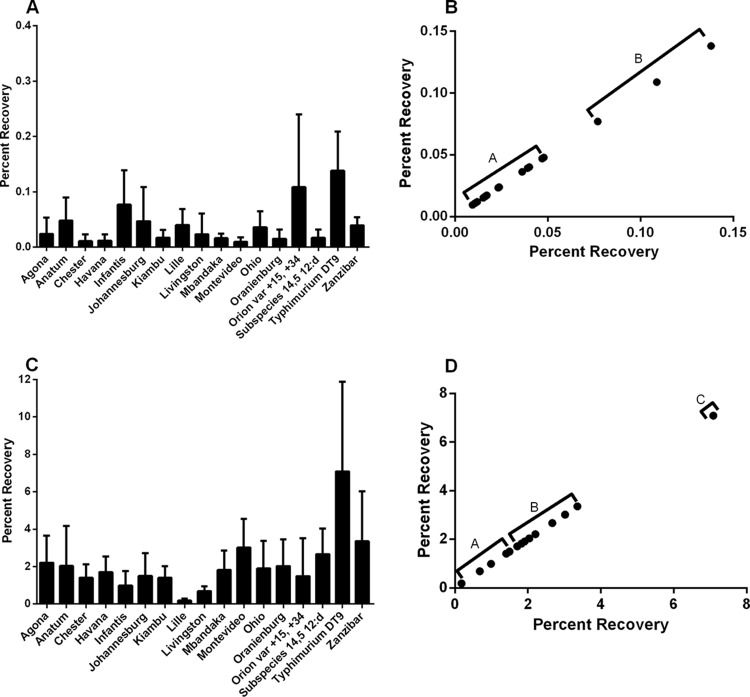FIG 1.
The in vitro invasive capacity of 17 nontyphoidal Salmonella serovars was assessed using the gentamicin protection assay with the human intestinal epithelial cell line Caco-2. Bacteria were either suspended in normal saline (A) or grown to stationary (liquid) phase in LB broth (C) and then added to cell monolayers at an MOI of 100. Data are presented as mean percent recovery. Assays were repeated five times. Statistical analysis was performed by Kruskal-Wallis ANOVA with post hoc analysis utilizing Dunn's multiple-comparison test. A significant effect of serotype for both treatment groups (P < 0.006, saline; P < 0.0002, LB broth) was detected, but no significant differences were observed between individual serotypes. Cluster analysis (k-means) was performed to identify invasion groups. Two invasive types were identified for serovars suspended in normal saline and are identified as group A (low) and group B (moderate) (B). Following growth in LB broth, substantial increases in percent recoveries were observed (C). Three invasion types were identified by cluster analysis and were classified as low (group A), moderate (group B), and high (group C) (D).

